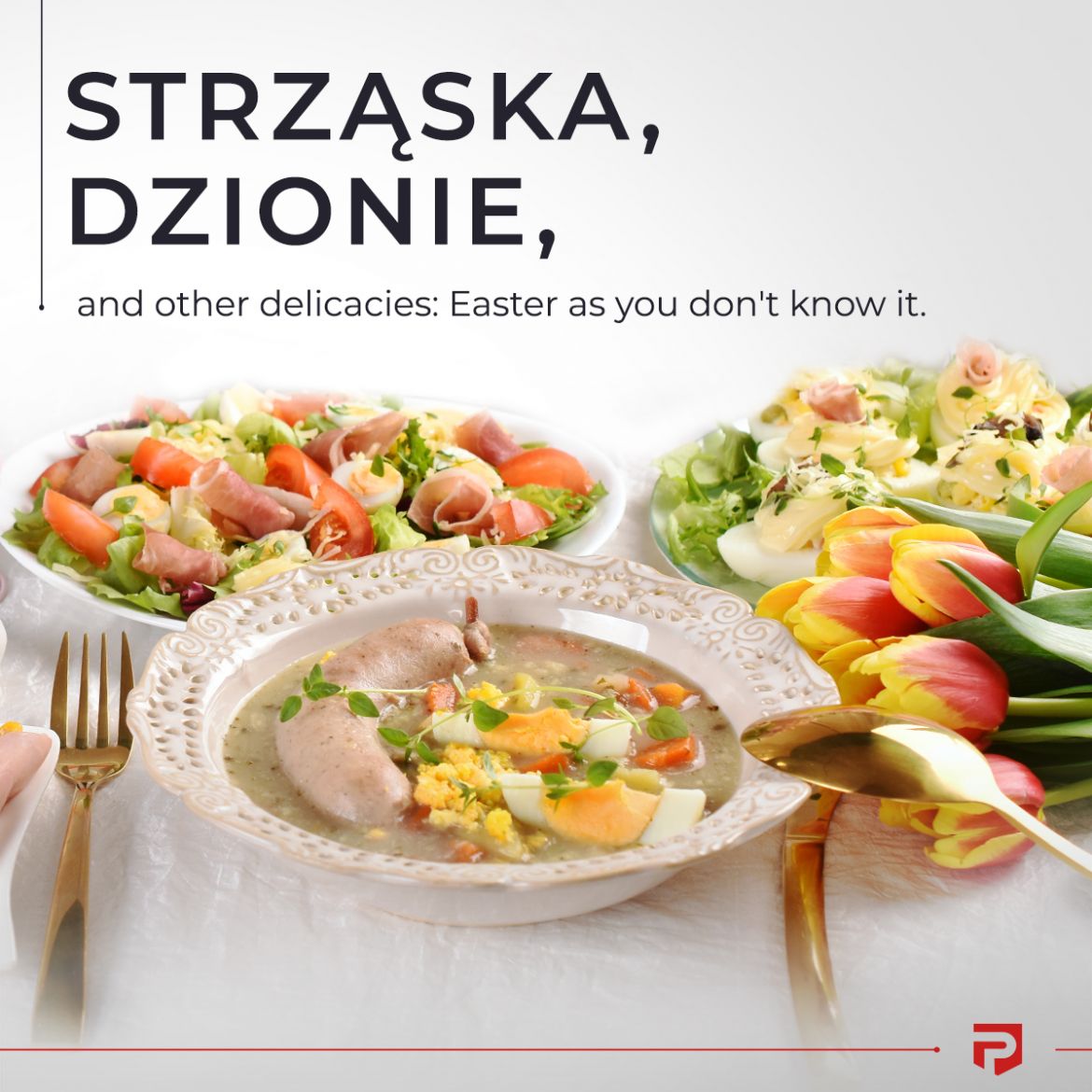Easter is coming – it is a special time when there is a lot of tasty dishes on the tables. On this occasion, it is worth having a look at the diversity of culinary Easter traditions, both in Poland and in other parts of Europe.
Polish Easter Tradition
In Poland, Easter is a time to meet with family at a festive table. Traditional dishes reflect local flavors and cultural heritage. Eggs - a symbol of rebirth - reign supreme on the tables, as they are an integral part of most Easter dishes. No less popular are horseradish, watercress, żurek [sour rye soup] with sausage, and cakes, such as mazurek or babka. However, our culinary wealth, is definitely more diverse and surprising depending on the region.
In Lesser Poland, one of the most important dishes is chrzanówka of Lanckorona - a soup made of freshly grated horseradish, cold meats, meats and vegetables, served with eggs. Another example is strząska, which is a paste made of sliced cold cuts, eggs, horseradish and spices. Sorda is very popular in a Podhale region – it is a highland version of horseradish soup served for lunch on Easter Sunday. Its indispensable accompaniment is eggs, cold cuts and white sausage. In Silesia, yeast buns - buchty - are the most popular, as well as other cakes, such as kołacz and strucla. Also popular is święcelnik – a yeast cake. In Cieszyn Silesia, on the other hand, murzin, or bread filled with pieces of ham, bacon and sausage, is popular.
A little further, in the Świętokrzyskie [Holy Cross] Voivodeship, there is a traditional sausage - dzionie, resembling pork pâté or black pudding. A Kashubian delicacy is zylc, i.e. jelly made from chopped pig's feet and vegetables. In Kujawy, there is a special variety of żurek [sour rye soup] – Kujawy żurek. It is a thick soup, cooked on rye sourdough, served with eggs, white sausage and potatoes. In Pomerania, the traditional Easter delicacy is ham in dough and carrot kuch, i.e. a cake made of carrots, flour and water. In Greater Poland, veal with garlic and pork leg jelly - studzienina - are popular.
Easter Culinary Traditions Abroad
Easter is a variety of flavors and traditions around the world. Each country has its own festive flavor, hiding a cultural richness that is worth exploring and appreciating.
In Greece, magiritsa, a soup made from sheep offal, is the most popular dish, while in Italy, pasqualina cake, a shortcrust pastry with spinach and a boiled egg. Spanish Easter tables can't miss chickpea stew with potatoes, spinach tomatoes, onions and garlic. The delicacy of the Germans is roast lamb, and the French have their chocolate cake nid de pâques, filled with chocolate eggs inside.
An Easter dish from Norway is lammestek, which is roasted lamb with rosemary, thyme and garlic and goat cheese. Right next door - a popular dish in Sweden is köttbullar, which is fried or roasted beef or beef and pork and lamb minced meat balls. Austrians eat osterschinken, a cold meat made of smoked bacon, pork neck, onions and garlic, while Lithuanians serve szpekuchy [or Speckkuchen], yeast dumplings stuffed with bacon and onions.
As Europe is long and wide, dishes never seen before can be found on local tables, and the dishes listed in the text are just the tip of this culinary wealth. After all, every country is a custom (or even, every region!). Although Easter culinary traditions go far beyond the traditional "święconka”[basket of food ordained in church] eggs, cold cuts or sour soup with white sausage reign supreme on the holiday table.
PROMAR meets customer expectations by providing products that highlight history, tradition and diversity. Our offer does not only take into account local taste preferences, but also reflect global culinary trends, resulting in a unique culinary and taste experience.
You are welcome to contact us!
udostępnij udostępnij




